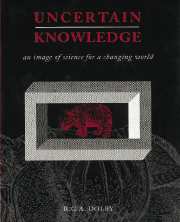Book contents
- Frontmatter
- Contents
- Preface
- 1 Introduction
- Part I The nature of science
- 2 Levels of cognitive activity
- 3 Facts in frameworks
- 4 Rationality, irrationality, and relativism
- 5 Knowledge and reality
- 6 A new account of the scientific process
- Part II Does science have distinctive qualities?
- Part III Changing science in a changing world?
- Appendix: Summary of cases of marginal and disputed science
- References
- Index
2 - Levels of cognitive activity
Published online by Cambridge University Press: 28 January 2010
- Frontmatter
- Contents
- Preface
- 1 Introduction
- Part I The nature of science
- 2 Levels of cognitive activity
- 3 Facts in frameworks
- 4 Rationality, irrationality, and relativism
- 5 Knowledge and reality
- 6 A new account of the scientific process
- Part II Does science have distinctive qualities?
- Part III Changing science in a changing world?
- Appendix: Summary of cases of marginal and disputed science
- References
- Index
Summary
Introduction
In this chapter I will present the argument central to the structure of the book, that the knowledge that is continually being constructed and reconstructed in science is usefully studied through the interaction of a hierarchy of levels of cognitive activity.
The post-Cartesian tradition of modern philosophy made knowledge a judgement of the individual mind. But knowledge is expressed in terms of the social instrument, language. There is a competing pull between analysing knowledge in terms of the individual and with respect to communities who share a language and a form of life. In societies as complex as ours, it is not always appropriate for social analyses to suppose that knowledge is constructed in large language-sharing communities Modern science studies seeks to understand science by drawing apart in space and time the local practices which constitute it. The present argument is that it is also helpful to distinguish a series of levels at which the nature of working scientific knowledge can be analysed. The knowledge held at each of these levels is shaped by the cognitive activity of that level. These levels are to be thought of as quasiautonomous, at least in the short term. They are affected, but not fully determined by, what goes on at other levels.
Discovery of the pulsar
Consider the following story, an idealised version of the discovery of the first pulsar. In July 1967, a newly constructed radio telescope operated by the Cambridge radio astronomy group began systematic recordings of the signals it received from the heavens.
- Type
- Chapter
- Information
- Uncertain KnowledgeAn Image of Science for a Changing World, pp. 13 - 35Publisher: Cambridge University PressPrint publication year: 1996



